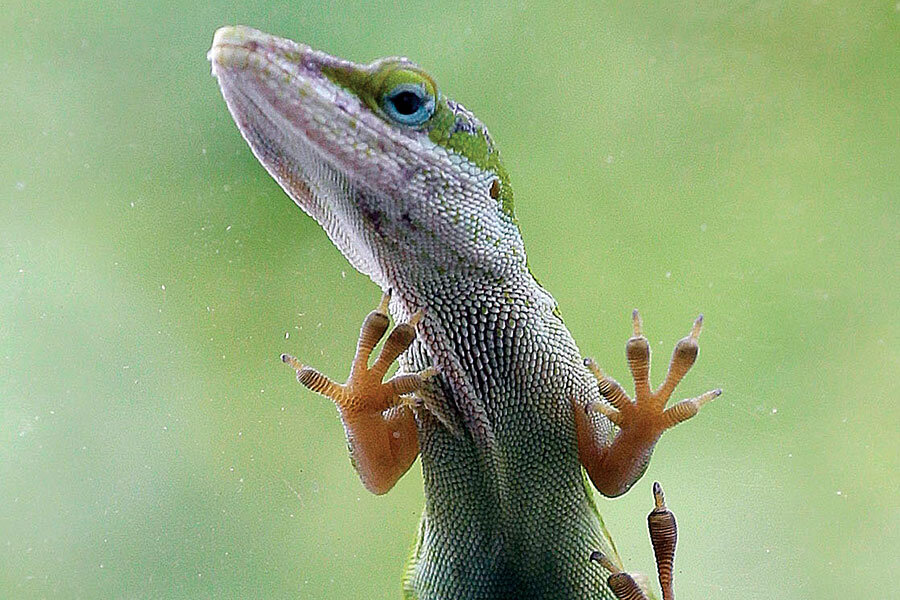The beauty underfoot
Loading...
The first day on the island of St. John, when I open the sliding door to the deck, a dull brown anole skitters toward me and I jump. I know these little lizards are harmless, but I shudder nonetheless. I shake my flip-flops and hope he’ll go away. He doesn’t. My feet stiffen as I feel the tickle of tiny reptilian toes on mine.
“Shoo!” I say, but by the time the word is out of my mouth, the creature – no bigger than a mouse – has noiselessly jumped to the belted trunk of a nearby coconut palm, where he hangs upside down, motionless, like a door knocker. Is it my imagination, or is his skin growing darker? He morphs from dull pewter to black in a matter of seconds. I feel as if I am watching tea steeping in a glass pot.
I hurry back inside the rental apartment, remembering to latch the sliding door.
The next day I go to drape wet towels over the railing, and the anole reappears. He seems curious, perhaps tempted by the terry-cloth scaffolding of the beach towels. I watch as he climbs up the edge of the laundry, stopping to let the Caribbean sun warm his skin. Perhaps we’re not so different, he and I. Hadn’t I spent the afternoon in a similar way, hiking up and down the Reef Bay Trail, resting against the ancient rocks, soaking up warmth as if I could store sunshine in my bones until spring?
By the fifth day, when the lizard appears, I say, “Oh, it’s you, again!”
I stay slouched in the deck chair, with a novel spine-split across my knees, as the anole scampers underneath. He lingers, checking out my chipped pedicure with his tongue. I look down and try to study his face, but he quickly drops one eyelid like a shutter. Then he’s gone. I see him leap into the flower box.
I stare at him, waiting for his next move. Suddenly his neck puffs up and stretches out until it is almost the size of his head, all the while turning a shocking shade of scarlet, like a neon turkey wattle.
I reach for my cellphone and do a quick search. I learn that a male anole exposes his dewlap when he’s marking territory, flirting like a fool, or exhibiting a major sign of stress. Sometimes all three conditions occur at once.
I try to look away so I don’t stress him further. Suddenly he leaps vertically onto the stucco wall behind my head. It turns out that anoles also have adhesive lamellae on their footpads. No wonder they can stick to any surface and defy gravity.
I put on my sunglasses, pick up my novel, and start to read. The anole commutes frenetically back and forth from the wall to the palm tree. We give each other space, like strangers on a train, each of us stealing a glance now and then as discreetly as possible. His back, I notice, is ridged and translucent, as beautiful as a paper fan. His tummy pulses as he breathes. I wonder if he is enjoying the fragrances in the air, as I am: the ginger thomas, the frangipani.
In time, long before I give up the key to the St. John apartment and return to the slush and squirrels back in Connecticut, I’ll begin to recognize a whole new arc of animal ancestry; I’ll appreciate the haunches and the slinky back, the scurry of adaptation. I’ll see God’s light in the tiniest of bodies; my world will grow wider by a few inches and a tail.
Later, friends will ask me if I enjoyed my time in the Virgin Islands, and I’ll nod and say how fortunate I was to have a change of scenery in the depths of winter. They’ll think sunsets and white sand – postcard beauty at its best. But I’ll be thinking of another sort of loveliness, always underfoot.







